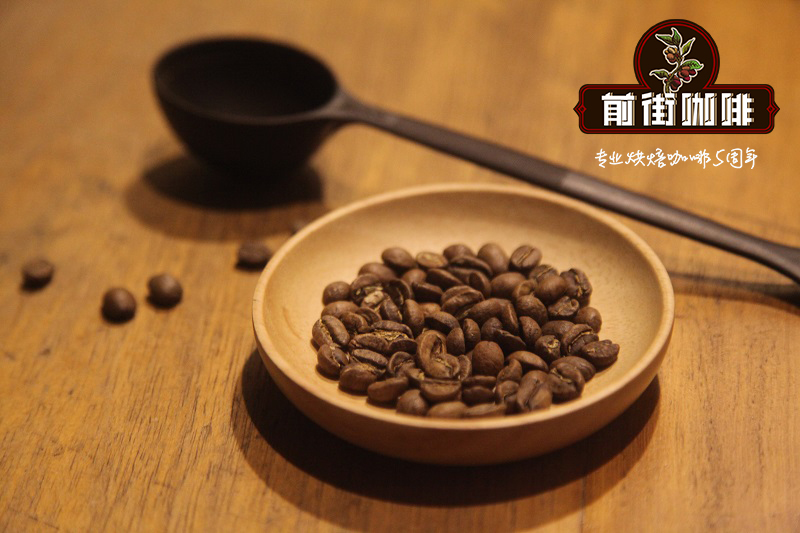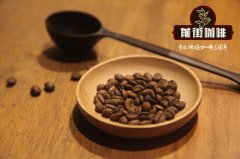Honduran Coffee Variety Introduction Honduran Coffee Bean Flavor New Generation Fruit Flavor

Professional coffee knowledge exchange more coffee bean information please follow the coffee workshop (Wechat official account cafe_style)
Front Street-Honduran Coffee
The cultivation of coffee in Honduras can be traced back to 1804, when it was introduced from Costa Rica to the Olancho region of Honduras. Most of the cultivation was owned by Spanish colonists at that time. After the independence of Honduras, successive leaders tried to vigorously promote coffee, especially issued a law, stipulating that coffee farmers can be exempted from any tax for up to 10 years. But helplessly, like Guatemala, under the influence of the big fruit companies of the United States at that time, they vigorously promoted the cultivation of bananas to supply local demand in the United States, but the cultivation of coffee did not stagnate, but grew slowly. until the end of the 20th century, coffee has become the two major cash crops along with bananas, and in recent years the international market has become enthusiastic about coffee, especially high-quality boutique coffee. Coffee has finally overtaken bananas to become the largest cash crop in Honduras.
Most of the coffee varieties grown in Honduras are Arabica, mainly derived from Bourbon Bourbon, Kaddura Caturra, Kaduai Catuai, Iron pickup Typica and Pacas Pacas.
Resistant varieties include IHCAFE 90, Lempira and Parainema.
Lempira is a Catimor Katim line (Timor Hybrid 832 tobacco 1 x Caturra) with high yield, suitable for planting at low and medium elevations (600-1200 m) and weak resistance to insect pests. It has been promoted as a major leaf rust resistance variety in the past 20 years, but unfortunately some cases of Lempira leaf rust have been found in some areas during the 2016 season.
Parainema is Sarchimor Saschim line (Timor H í brido 832 x Villa Sarchi). It is also suitable for planting at low and middle elevations (600-1200 m). It is larger than Lempira bean type, resistant to leaf rust and resistant to some insect pests.
IHCAFE 90 is a Catimor Katim line (Timor Hybrid 832 max 1 x Caturra). It has high yield and is suitable for planting at low altitude (600-1000 m). It is resistant to leaf rust, weak to insect pests and short plants.
According to the data from 2004 to 2016 of the CoE competition in Honduras, the most common ones are Catuai,Pacas,Caturra and Bourbon, respectively. IHCAFE-90 of the Katim family is closely followed by Bourbon.
In recent years, benefiting from the growth of domestic coffee consumption, we can see more and more Honduran beans, from high-end commercial beans dominated by formula beans to some boutique manor beans in the past year or two. there are also more and more clean, fruit-conditioned beans.
In short: Qianjie is a coffee research hall, happy to share the knowledge about coffee with you, we share unreservedly just to make more friends fall in love with coffee, and there will be three low-discount coffee activities every month. The reason is that Qianjie wants to make more friends drink the best coffee at the lowest price, which has been Qianjie's tenet for 6 years!
END
Important Notice :
前街咖啡 FrontStreet Coffee has moved to new addredd:
FrontStreet Coffee Address: 315,Donghua East Road,GuangZhou
Tel:020 38364473
- Prev

A brief introduction to the coffee grading system in El Salvador the spirits of high altitude in the coffee producing areas of El Salvador
Professional coffee knowledge exchange more coffee bean information please follow the coffee workshop (Wechat official account cafe_style) front street-Salvadoran coffee grade, producing area in the middle of the North and South American continents, there is a coffee country, where there are volcanoes, oceans, lakes, and primeval forests, the scenery is ridiculously beautiful. The local coffee bean planting industry is developed, which continuously sends excellent products to the world.
- Next

Honduras coffee flavor characteristics Honduras litchi orchid coffee how to rush to have litchi flavor
Professional coffee knowledge exchange More coffee bean information Please pay attention to coffee workshop (Weixin Official Accounts cafe_style) Front Street-Honduras litchi orchid now fire litchi orchid, using brandy barrel fermentation, coffee beans smell obvious litchi aroma, taste also added a layer of fermented wine feeling. This floral, fruity coffee bean broadens the coffee like a different kind
Related
- Beginners will see the "Coffee pull flower" guide!
- What is the difference between ice blog purified milk and ordinary milk coffee?
- Why is the Philippines the largest producer of crops in Liberia?
- For coffee extraction, should the fine powder be retained?
- How does extracted espresso fill pressed powder? How much strength does it take to press the powder?
- How to make jasmine cold extract coffee? Is the jasmine + latte good?
- Will this little toy really make the coffee taste better? How does Lily Drip affect coffee extraction?
- Will the action of slapping the filter cup also affect coffee extraction?
- What's the difference between powder-to-water ratio and powder-to-liquid ratio?
- What is the Ethiopian local species? What does it have to do with Heirloom native species?

